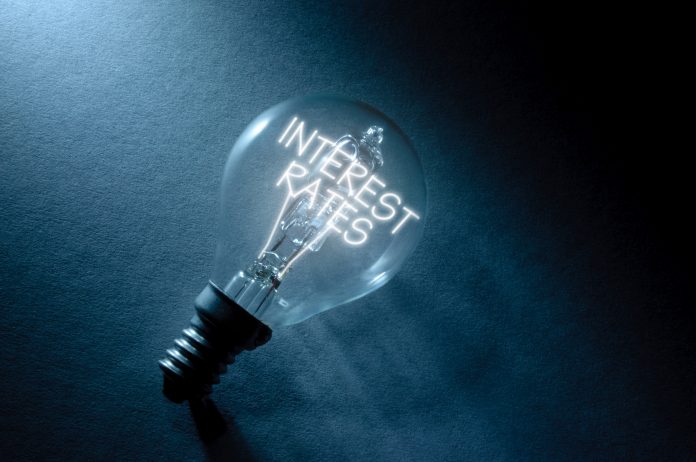John Ellmore, Director of NerdWallet, explains what negative interest rates could mean for savers, and the steps they can take to make their money work harder, in spite of the testing economic climate
In January 2020, the majority of Britons will have given little thought to the coronavirus. Whilst the virus appeared to be spreading at a rapid rate across the world, most will have assumed that it would have little impact on their day-to-day lives. Of course, this was not the case.
The coronavirus pandemic caused the UK economy to grind to a halt, with the Government imposing three national lockdowns in less than 12 months, as well as restrictive tier systems across regions.
It is perhaps unsurprising, therefore, that between July and September 2020, 314,000 people were reported to have been made redundant. Adding to the economic strain, Government spending rose by £280 billion last year, with public borrowing increasing to the highest level in peacetime history at 19% of GDP.
The Government and the Bank of England (BoE) have tried to limit the damage. In March 2020, they slashed interest rates to a historic low of 0.1%. Although, with COVID-19 continuing to cause economic volatility, the BoE is considering lowering rates below zero. In October last year, BoE officials even issued a letter, prompting UK banks to prepare for negative interest rates.
The consideration of negative rates is not unwarranted. They will encourage commercial banks to lend more and stimulate an increase in consumer spending, thereby driving economic growth.
Although, they are unlikely to have such a positive impact on consumer savings accounts.
What will negative rates mean for savers?
In short, negative interest rates make it more expensive for commercial banks to keep their customers money in savings accounts. So, in theory, should rates fall below zero, some banks may be forced to charge clients to keep hold of their money.
However, this is an unlikely scenario. The imposition of such fees would likely drive many savers to rapidly withdraw their cash from savings accounts, causing even more economic volatility – and naturally, banks will be keen to avoid this.
Although, even without additional bank fees, savers would likely see the value of their savings decrease over time, and this would almost certainly be the case in real terms, given that the UK’s inflation rate is currently above 0.5%.
That said, this does not mean that people’s financial futures are in jeopardy. On the contrary, there are numerous options available, to help Britons protect their hard-saved cash.
Explore different accounts
Even if interest rates fall below zero, adults needn’t feel that they must turn their back on traditional savings accounts.
There are some accounts which do offer relatively generous rates. For example, some fixed rate accounts offer up to 1.25% in interest, whilst certain instant access accounts proved as much as 0.6%. The key for many savers will be not to make any snap decision and dedicate time to thoroughly researching different savings account options.
Comparison websites offer a great starting point for this. They search the market on behalf of savers and present all relevant options in a user-friendly table. So, all users have to do is select a savings option, which best suits their needs.
Investing potential
Some savers might be keen to make their money work a bit harder, in which case, it could be beneficial to consider stocks and shares ISAs.
As the name suggests, these are tax-efficient savings accounts which give savers to opportunity to invest their money in shares of their choosing – although an ISA provider is always on had to aid any investment decisions.
If stocks perform well, these ISAs have the potential to offer generous returns on investments. However, as is the case with any investment, savers are at the mercy of the market – so there is a possibility of the value of savings decreasing if markets fall. So, I’d advice savers to seriously consider their risk appetite before committing to this savings strategy.
Consider premium bonds
Alternatively, premium bonds could offer Britons a low-risk savings option, which offers a bit more excitement than a traditional savings account.
To get involved, adults can purchase bonds for £1 each. The amount minimum one can purchase at one time is £25, with the maximum being £50,000. Rather than gaining interest on these investments, bondholders are entered into a monthly cash prize draw, giving them the opportunity to win a tax-free lump sum of anything from £25 to £1 million.
Additionally, each investment is 100% protected, so even if savers don’t win a cash prize, they will always break even.
That said, the chances of winning any large sum are rather low; there is approximately a 34,500-to-1 chance of winning any form of cash prize for each £1 bond purchased. With this in mind, premium bonds might not be suited to those who would like to make substantial or steady gains on their savings.
Whilst negative interest rates might seem like a daunting prospect, they needn’t jeopardise savers’ financial futures. There are a plethora of different savings options available to help adults make their money work harder; it’s simply a case of dedicating time to conducting comprehensive research and choosing a savings route that best suits their needs.











